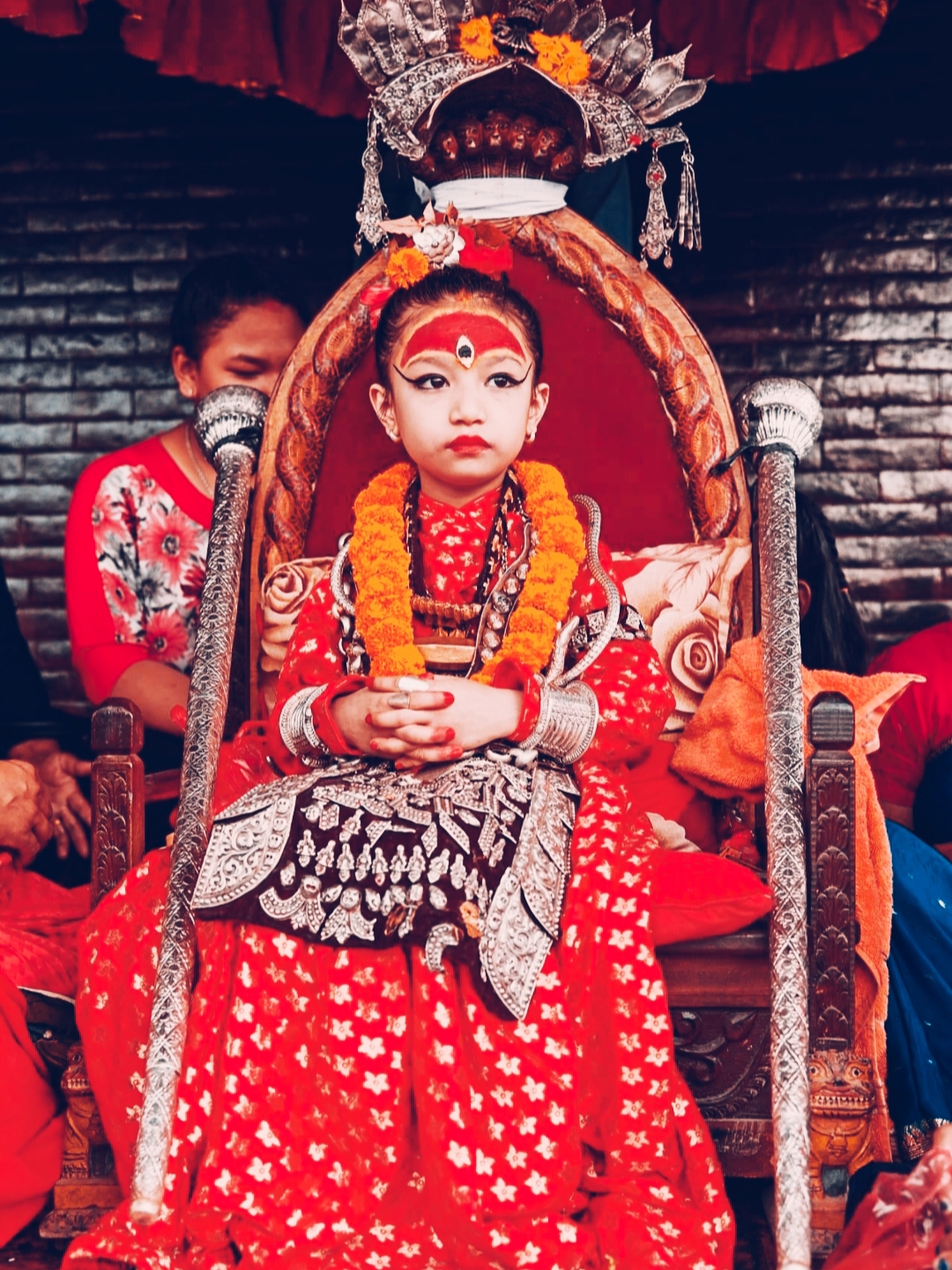On September 30, a two-year-old girl was carried through the streets of Kathmandu, Nepal, her forehead marked with a painted third eye and her small body wrapped in red silk. According to CNN, the toddler, Aryatara Shakya, was declared Nepal’s new “living goddess,” replacing the outgoing Kumari who stepped down upon reaching puberty.
“She was just my daughter yesterday, but today she is a goddess,” her father, Ananta Shakya, said. The family, part of the Newar community’s Shakya clan, a Buddhist subgroup indigenous to the Kathmandu Valley traditionally associated with metalwork and religious service, gained elevated social status through the selection. However, the transformation of a toddler into a divine figure also renews an old debate over faith, culture, and child rights.
The tradition of the Kumari, revered by both Hindus and Buddhists, has existed for more than 300 years, as stated in The Week. Girls between the ages of two and four are chosen for their “unblemished skin, hair, eyes, and teeth” and are believed to embody the goddess Taleju, an incarnation of divine feminine power. During major festivals like Indra Jatra and Dashain, the Kumari is wheeled through Kathmandu in a chariot pulled by devotees who touch her feet in reverence.
However, beneath the spectacle lies a reality few witnesses. The Kumari’s life is one of isolation: her feet may not touch the ground outside the temple, and her interactions with family are limited. “They are allowed outside only a few times a year for festivals,” CNN reported. Former Kumaris often face difficulties adapting to normal life once their divine status ends. Learning to perform daily tasks, returning to school, and forming friendships become major challenges.
Anthropologically, the Kumari tradition reflects a deep cultural tension between sacred symbolism and human individuality. The living goddess represents Shakti, or divine feminine energy—a concept that elevates women as sources of cosmic power. Yet the paradox is clear: real girls are deprived of freedom in order to sustain that idealized image of divinity. This reflects a broader societal pattern in South Asia, where women are revered in theory but restricted in reality. The Kumari’s confinement thus becomes a symbolic statement about how culture can both honor and oppress the feminine at once.
For the Newar community, the Kumari embodies continuity and spiritual legitimacy. Her selection connects present-day Nepal to its mythic past, maintaining religious unity between Hindu and Buddhist followers. However, the strict selection process— in which only upper-caste Shakya girls who meet certain physical criteria can qualify—also exposes how purity and divinity are tied to social hierarchy, reinforcing caste and gender inequalities under the guise of devotion.
Culturally, the Kumari serves as both a unifying figure and a marker of Nepal’s religious identity. She embodies the blend of Hindu and Buddhist practices unique to Kathmandu Valley and represents Nepal’s resistance to Western modernity. However, as sacred traditions evolve, the Kumari’s confinement increasingly contrasts with growing global emphasis on children’s rights and gender equality.
Anthropologically, the Kumari tradition reveals how Nepalese society negotiates the boundary between the sacred and the social. The worship of a living child as divine reflects the cultural emphasis on purity and spiritual power embodied in the feminine, yet it also exposes how sanctity can justify social restrictions. The Kumari thus serves not only as a religious figure but as a reflection of Nepal’s collective identity—balancing devotion, hierarchy, and the evolving role of women.
The government has taken small steps toward reform, mandating education for Kumaris and offering pensions after their service ends, even if those pensions are only around $100. Yet the central dilemma remains: can a society worship the feminine divine while upholding the freedom of real women and girls?








